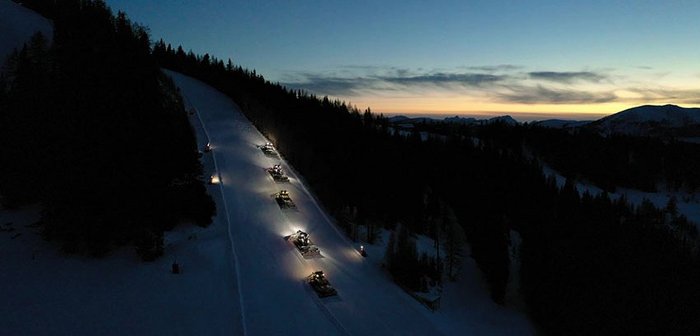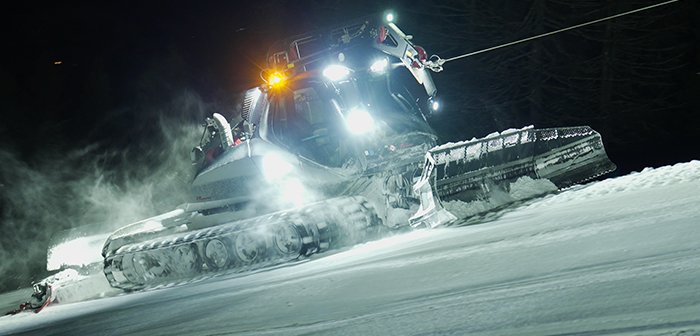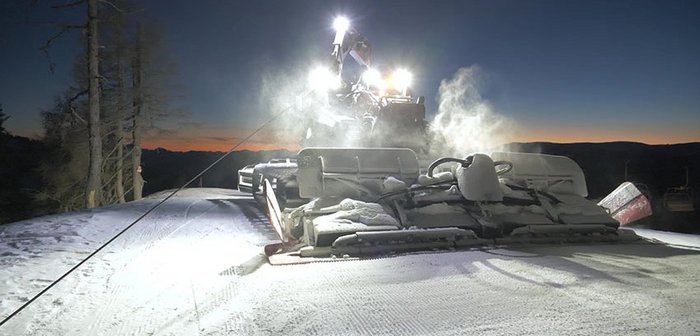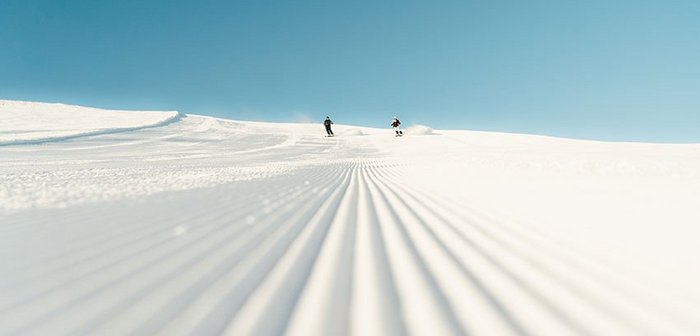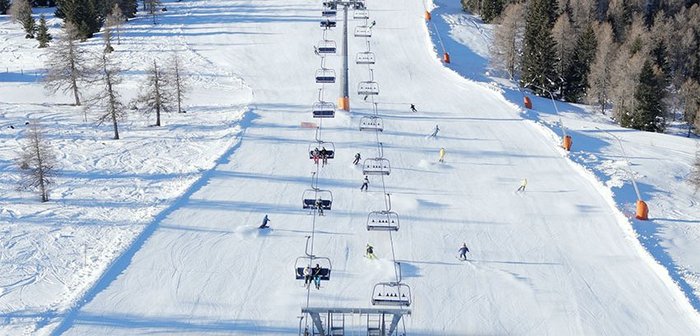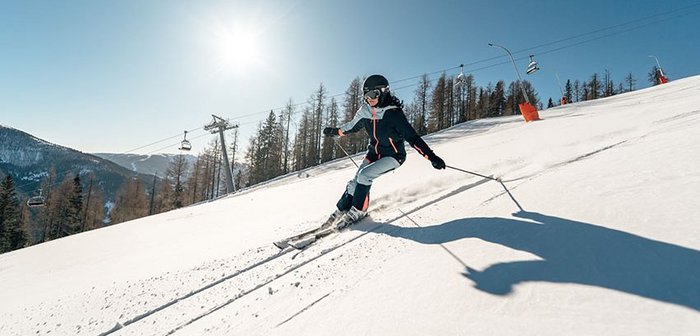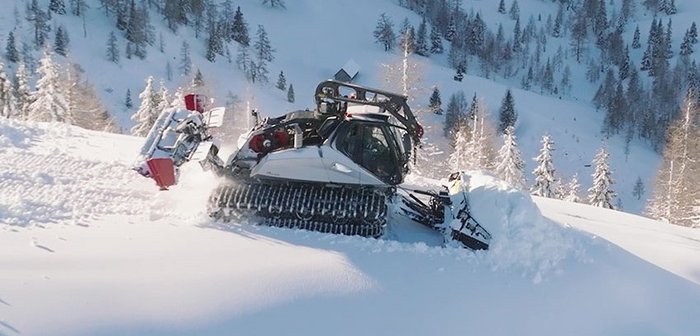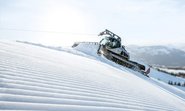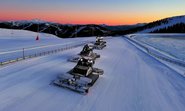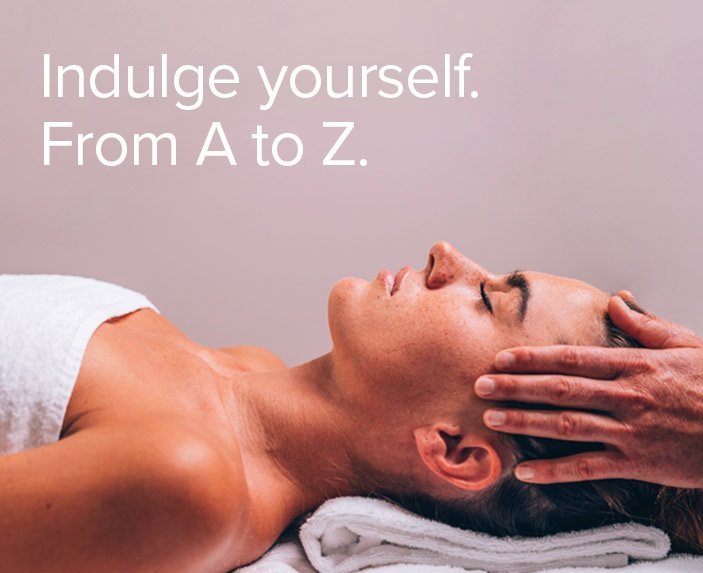You carve down into the valley making elegant turns. Snow crunching beneath your skis, you leave behind a razor-sharp trail on the slope.
And yet, a huge amount of preparation and expertise is required to turn the white splendour into a passable surface. When and, most importantly, how is a ski slope groomed? What happens when it starts snowing? And what’s with those grooves you typically find on the surface? Today, we tackle the most frequently asked questions and widespread misconceptions about grooming the slopes.
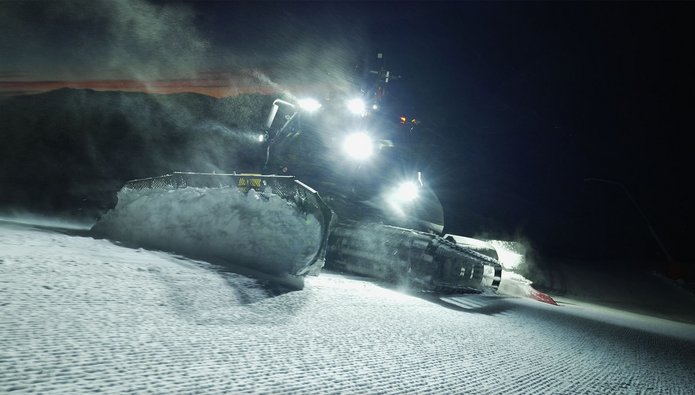
When are the slopes groomed?
You’ve probably spotted a light or two out on the slopes while relaxing in your hotel room or in the warm thermal pool of the Thermal Römerbad. Well, when your ski day comes to an end, it’s just getting started for our slope team. Right in the spot where you make your turns during the day, they’re heading up and down at night with 530 hp. It’s best to groom the slopes between 5.00 p.m. and 1.00 a.m. because then the snow has enough time to solidify overnight without too much water freezing over, which could leave ice on the surface.
Why is night frost so important?
Just like your body after a strenuous day of skiing, a slope also needs time to rest so that it can be back in peak condition again by morning with grippy, hard and durable snow. This resting phase is called sintering, which refers to the melting, cooling and solidification of the snow crystals. It’s the night frost and the hardening time that are the real miracle treatment here. Skimp on this period and the slope will only be all the softer the next day. And what you get in turn is rapid hill formation and moguls.
How are the slopes actually groomed?
Varied, grippy, robust, evenly groomed, durable, visually appealing and, of course, no ice slabs – a slope has to meet a number of requirements to make sure it’s safe enough and comfortable to ski on. But that’s no problem for our team and their trusty Prinoth Leitwolf. Using the blade on the snow groomer, they first take the snow that the skiers have pushed downhill during the day and put it back into place. The tiller at the rear of the snow groomer is then used to remove any unevenness and create as flat a surface as possible with even snow distribution. Finally, smooth it over et voilà: the slope is ready for another adventurous family day of skiing.
What does the fine rib on the surface do?
The sight every winter sports fan can’t wait to see – the typical grooves on the surface of a freshly groomed slope. They not only allow skiers to get a firm grip on the ski, they’re also perfect for smooth turns and make for a truly fantastic skiing experience. And it’s these fine rib grooves (known as “finish” in technical jargon) that are also extremely important when it comes to slope grooming. Thanks to the larger surface area, the cold can penetrate the snow better and cool and solidify it even better overnight.
Why does the slope change throughout the day?
Of course, there are also less ideal slope conditions for skiing. The ‘bumpy’, ‘icy’ or ‘slushy’ sections you might see are usually not down to how the slope has been prepared, but to external influences. Despite careful grooming, the condition of the slopes can change considerably over the course of the day due to different weather conditions, strong temperature fluctuations as well as the number and ability of the skiers. Even the best crew and technology are no match for nature and physics all the time.
What do you do if it starts snowing again?
While most of the time we’re glad to see fresh snow, it poses a major challenge for our slope team. That’s because if there’s heavy snowfall in the evening, they have to postpone the slope grooming for a while. And then starting later has consequences for the quality of the slope too, because the sintering process is shorter and the snow cannot freeze through properly. It’s when the first hills start appearing it gives the impression the slopes have not been prepared properly. However, for reasons of safety and liability, we can’t re-prepare the slopes while the Bad Kleinkirchheimer Bergbahnen are up and running. But: These (few) days are all the better for powder skiing!
How much and what kind of snow is needed?
Normally, a snow cover of 40 - 60 centimetres is required for grooming. In flat terrain, such as on meadows or around the valley stations, 20 centimetres might even do the job. But: If a slope is groomed several times, often only around 20 centimetres of 1 metre of fresh snow remain. And besides, technically produced snow is actually more suitable for grooming than natural snow. This is because there’s still a lot of air between the flakes of natural snow, which has to settle first. The technical snow, on the other hand, is already very compact and produced with a higher density, which makes it easier to groom afterwards.
Seriously hard slopes like in the World Cup? No thanks.
While ski racers would be only too pleased about hard, mostly icy slopes, it’s a no from us. Icy slopes? Well, they’re the nightmare of all amateur athletes. So for us to maintain a consistent (and therefore fair) slope quality on a racing slope even after dozens of descents, we need a resistant slope surface. And a mixture of snow and water is the best way to achieve this. Getting the perfect surface? It’s snow problemo!
As you can see, there’s quite a lot that goes into our 103 kilometres of slopes. But thanks to the commitment of our entire team, we look forward to a snowy winter season with lots of visitors every year. See you soon at the skiing area Bad Kleinkirchheim!

